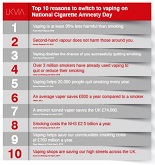Philip Morris International says it has been highlighted as a global leader on corporate climate action by the environmental-impact non-profit organization CDP [formerly the Carbon Disclosure Project], achieving a place on the CDP Climate Change A List for the fifth consecutive year.
In a note posted on its website yesterday, the company said it was the only tobacco company to have scored an A and that it had been recognized for cutting emissions, mitigating climate risks and developing the low-carbon economy, based on its 2018 disclosure to CDP.
“Climate change is one of [the] major concerns for humanity, and companies can make a difference,” said PMI CEO André Calantzopoulos. “Just like we are leading our industry’s transformation toward a smoke-free future, we are focused on bettering every part of our business and supply chain to become a leader in sustainable business practices.”
The company said its efforts to reduce the environmental footprint of its operations were focused on sustainable design in new facilities, energy efficiency in manufacturing processes, greener purchasing of electricity and fuels ‘as well as greening of our fleet’. ‘Additionally, the environmental efforts go beyond the factory gates: Most GHG [greenhouse gas] emissions related to the tobacco supply chain come from the curing process for Virginia flue-cured tobacco, one of the main tobacco types the company purchases,’ it said. ‘PMI aims to lower GHG emissions in the curing process by 70 percent by 2020 (vs. 2010). To achieve this, PMI works with contracted farmers and leaf tobacco suppliers to improve curing-barn efficiency (combustion efficiency, ventilation and controls), as well as eliminate the use of coal and non-sustainable wood. The CDP A-list recognition underscores that the company is on track to achieve its target.’
Meanwhile, Paul Simpson, the CEO of CDP offered congratulations to all the companies that made it onto the A List this year. “As the severity of environmental risks to business becomes ever more apparent, these are the companies that are positioning themselves to provide solutions, seize new market opportunities and thrive in the transition to a sustainable economy,” he was quoted as saying.
“We need to urgently scale up environmental action at all levels in order to meet the goals of the Paris Agreement and the Sustainable Development Goals. It’s clear that the business world is an essential player in this transition, and the A List companies are set to make a substantial contribution to those goals.”
More information about PMI’s sustainable practices are available here.









